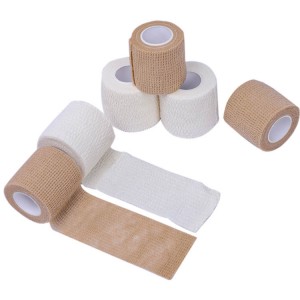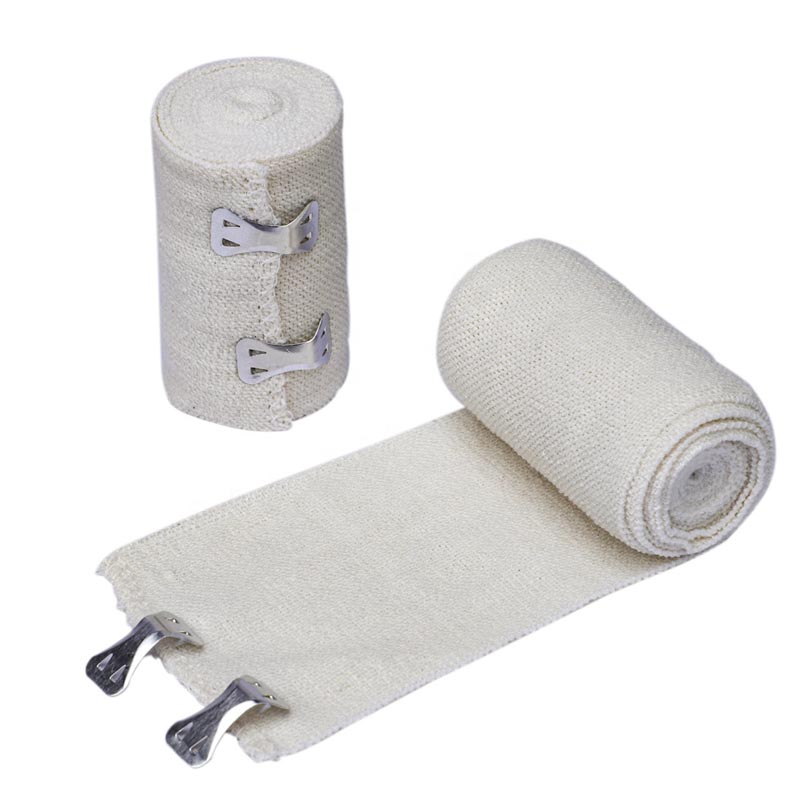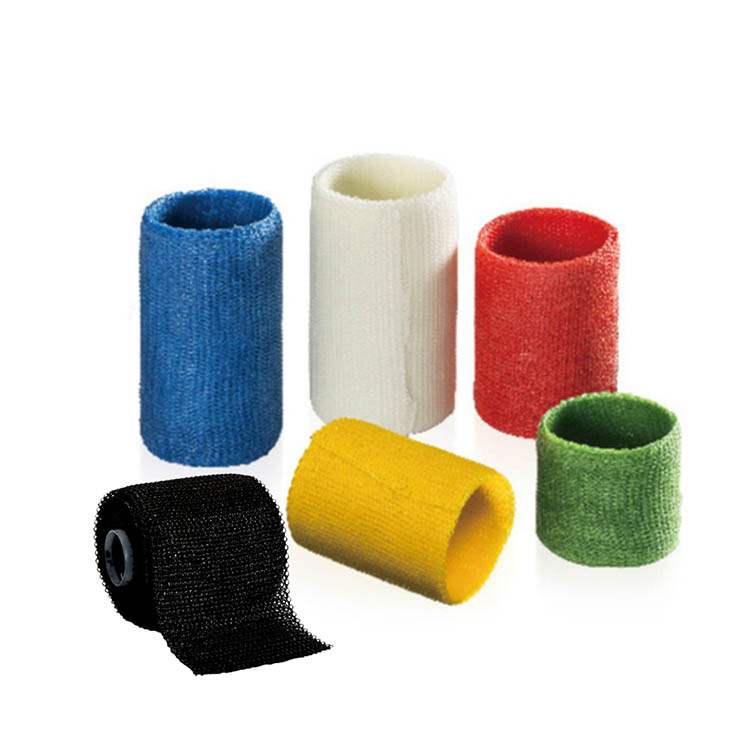function and type of plaster bandage| KENJOY
Plaster bandage is a special thin-hole bandage sprinkled with fine powder of anhydrous calcium sulfate, which is hardened and shaped after water absorption and crystallization. it is one of the commonly used clinical treatment techniques in trauma orthopaedics. Although modern fixation technology has been constantly updated and developed, plaster bandage fixation still occupies a very important position, and it takes skill to do it well. Today, we collected the relevant plaster bandages for your reference.
Plaster bandage fixation technique
Plaster bandage is a commonly used method of external fixation, which is suitable for bone and joint injury and postoperative external fixation. The utility model has the advantages that it is easy to achieve the treatment principle of two-point fixation according to the shape of the limb, which is definite, convenient for nursing and convenient for long-distance transportation.
The traditional plaster bandage is to sprinkle the fine powder of anhydrous calcium sulfate (hydrated lime) on a special thin-hole bandage, which is very strong after water absorption and crystallization. Its disadvantages are heavy, poor air permeability and poor X-ray transmittance.
At present, the new types of gypsum bandages are mostly polymer materials, such as viscose, resin, SK polyurethane and so on. Polymer gypsum bandages have the advantages of high strength, light weight, good air permeability, strong light transmittance, no fear of water, cleanliness, sanitation, environmental protection, strong plasticity, convenient operation, no irritation and allergic reaction, but the price is more expensive.
Common types of gypsum fixation
1. Plaster bracket:
On the plate, fold the plaster bandage into plaster strips of required length as needed. Placed on the dorsal (or posterior) side of the injured limb. Wrap it in a bandage. To achieve a fixed goal. There are generally 10-12 layers of upper limbs and 12-15 layers of lower limbs. Its width should be 2 to 3 around the circumference of the limb.
2. Plaster splint:
Two plaster strips are made according to the method of plaster support. Respectively, it is affixed to the extension side and flexion side of the fixed limb. Apply the hand to the limb and wrap it with a bandage. The firmness of plaster splint fixation is better than gypsum bracket, which is mostly used for limb swelling after bone and joint injury, which is easy to adjust and relax. So as not to affect the blood flow of the limbs.
3. Gypsum pipe type:
The plaster strip is placed on both sides of the flexion and extension of the injured limb, and then the plaster bandage is used to wrap the fixed limb. Sometimes in order to prevent swelling of the limbs leading to disturbance of blood circulation, when the plaster tube is not dry and hard after shaping, it is cut longitudinally in front of the limb, which is called the slit of the gypsum tube.
4. Body plaster:
It is a method of using plaster strip and plaster bandage to form a whole wrapping and fixing torso. Such as head and neck chest plaster, gypsum vest, hip herringbone plaster and so on.
Indication of plaster bandage fixation
1. fracture of some parts where the small splint is difficult to fix. For example, the fracture of the family pillar:
2. after debridement and suture of open fracture, the wound has not yet healed, the soft tissue should not be pressed, and it is not suitable for small splint fixation.
3. pathological fracture.
4. some bones and joints that need to be fixed in a specific position for a long time after operation, such as arthrodesis.
5. in order to maintain the position after deformity correction. For example, adult equinovarus equinovarus underwent three-joint fusion.
6. suppurative osteospermia and arthritis. It is used to fix the affected limb. Relieve the pain. Control inflammation:
7. some soft tissue injuries. Such as tendon (including Achilles tendon), muscle, blood vessel, nerve rupture need to be fixed in the relaxed position after suture. And ligament injury, such as knee joint lateral collateral ligament injury, need to be valgus plaster support or tube fixation.

Technical requirements for plaster bandage fixation
Observe the three-point fixed principle:
There are three fixed intermediate force points on the opposite side of the soft tissue hinge and a force point at the upper and lower end of the ipsilateral backbone of the hinge. Only by accurately shaping the relationship between the above three points can the gypsum tube type stabilize the fracture.
Good shaping:
After drying and hardening, the plaster bandage can fully match the outline of the limbs, and the lower limbs are like tights. The foot should pay attention to the shaping of the arch. It should be flat. Do not twist and rewrap the plaster bandage to prevent wrinkles.
Maintain a reasonable joint position:
In addition to the special position, the joint is generally fixed in the functional position to prevent stiffness and loss of function. The recommended functional location should be the location that minimizes interference with important activities in daily life. Therefore, fixing the joint in the functional position is beneficial to the functional recovery.
Fingers and toes should be exposed in order to observe the blood circulation, sensation and activity of the limbs.
Function and so on. At the same time, it is beneficial to functional exercise.
After the plaster bandage has been bandaged and shaped, the date and type of plaster should be marked on the plaster. If there is a wound, the location should be marked or the window should be opened directly.
In order to prevent osteoporosis and muscle atrophy, patients should be guided to carry out functional exercise.
Sling can be used to increase support, crutches to prevent weight-bearing or use of the affected limb, to avoid aggravating pain or swelling and / or causing splint fracture.
Complications of plaster bandage fixation
1. Fracture displacement, abrasion, and infection caused by loosening or inappropriate size of plaster:
2. Human plaster is too tight to cause neurovascular damage:
3. Contact dermatitis.
4. Pressure sore.
5. Thermal burn (heat released when gypsum is solidified).
If the splint is used carefully and the neurovascular status of the patient is monitored, most of these complications can be avoided. The plaster fixation was correct and the patients were well maintained at that time, and few complications occurred.
The above is the introduction of the function and type of plaster bandage. if you want to know more about plaster bandages, please feel free to contact us.
Learn more about KENJOY products
Post time: Mar-16-2022



